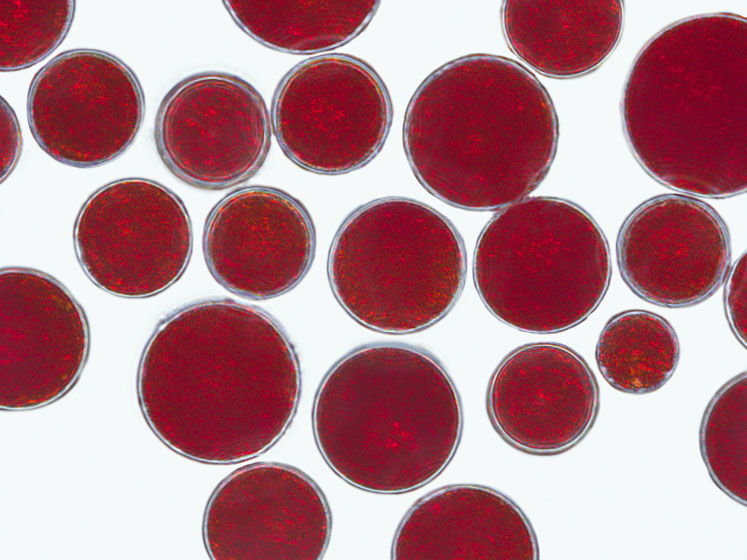Although algal ingredients are not new in the field of nutrition, interest in these nutrients is growing — and for many reasons. Consumers are increasingly turning to algae-derived products as demand for plant-based ingredients continues to soar.
For the third year in a row, Innova Market Insights has highlighted the “Plant-Based Revolution” as a key trend. The market research company recently revealed an average annual growth of 68% in food and beverage launches bearing a “plant-based” claim (Global CAGR 2014–2018).
Moreover, the European plant-based supplements market is predicted to reach a CAGR of 9.4% between 2020 and 2025.1
Plant-based innovation continues to flourish as a result of consumer interest in health, vegetarian nutrition, sustainability and ethics, which ties into the broader consumer lifestyle trend towards cleaner living and eating.
Sustainability and traceability concerns
Consumers are increasingly concerned about the origins of their products, which means sustainability expectations are driving plant-based sourcing.

Andie Long
The global food and nutraceutical industries are therefore starting to focus on algae — one of the most promising foods for the future — as they are easy to cultivate and offer an abundance of protein and other nutrients, all while maintaining biodiversity.
They require significantly less energy and nutrients to be kept alive, which is why algae are more sustainable than conventional crops and, therefore, have minimal environmental impact.
As we become more mindful of our own health and that of our planet, microalgae are an ingredient resource with plenty of promise. Almost at the bottom of the marine food chain, microalgae supply fish and krill with astaxanthin and omega-3 fatty acids, yet are a sustainable and vegetarian alternative to both.
Growing appetite for natural astaxanthin
Common algae are becoming very popular in food preparation, as awareness of their benefits continues to grow. This trend offers huge potential for market growth for microalgae products and astaxanthin in particular. The natural antioxidant derived from Haematococcus pluvialis microalgae has carved out a special place for itself among algal ingredients.
And demand shows no sign of abating as consumers — now more than ever — look for preventive natural ingredients to support their health.
Globally, the Haematococcus pluvialis market is expected to reach a CAGR of 13.6% between 2020 and 2027, which is attributed largely to astaxanthin’s numerous well-being benefits, rising health awareness and the increasing consumption of antioxidants in food and supplements.2
The European market is poised to reach nearly $30 million by 2027, up from $12.4 million in 2020, with countries such as Germany, the UK and Italy being the major contributors to this growth.
Although neutralising free radicals is very important for the body, consumers are also looking for more specific health benefits, such as eye health, immune defence, skin beauty, cognitive function and athletic performance.
Support for all of these and more can be found in just one astaxanthin-based supplement. Furthermore, the ingredient can be used in many different formulas and has been the subject of a lot of new product research and development.
For instance, a recently published randomised, double-blind, crossover study found that AstaReal natural astaxanthin helps to improve sporting endurance and fat metabolism.3
It is the first trial to demonstrate an increase in whole-body fat metabolism and a corresponding reduction in the respiratory exchange ratio during endurance exercise in those supplementing with astaxanthin.
Quality is key
From soft gums to liquid shots, sachets and chewable capsules, there are numerous innovative astaxanthin applications that can be used in various formulas, as well as in combination with a range of other ingredients.

But when choosing an astaxanthin supplier, companies should pay particular attention to their production methods, the stability and purity of their products, the astaxanthin content in the biomass and their quality certifications, as the nutrient’s quality is affected by the environment in which Haematococcus pluvialis is cultivated.
AstaReal rejects outdoor production methods as they are susceptible to contamination. Instead, the company processes its algae indoors under controlled conditions. This results in a safe, stable product with an astaxanthin content of at least 5% in the biomass and no impurities.
Questions and answers, challenges and opportunities
KSR: What hurdles does the nutrition sector face in the plant-based space and how can algae help to overcome them?
AL: One of the biggest challenges we will face in the future is how to sustainably feed the planet’s growing population with limited resources. Plants need fresh water, nutrients and space to grow.
And with the increasing demand for plant-based ingredients, even more valuable resources will be required. Algae offer a distinct advantage because they need significantly less energy and nutrients to be kept alive, and no pesticides or protection chemicals, which makes them more sustainable than conventional crops.
KSR: What unique consumer needs can algae address?
AL: Nutritionally, algae typically contain all the essential nutrients required for human health and well-being. They are a renewable source of protein, but also offer other high-value compounds, including astaxanthin, beta-carotene and omega-3 fatty acids such as EPA and DHA.
In the face of growing shortages and pressure on our resources, and the increasing demand for proteins, carbohydrates and other valuable ingredients — especially those that are vegetarian, sustainable, environmentally friendly and organic — it’s likely that microalgae will play a significant role in the population’s diet in the years ahead.
KSR: How has the market for algal ingredients evolved over the years, and where might it go in the future?
AL: Marine-derived ingredients have been popular in Asia for years, but they are just beginning to gain traction in the rest of the world. With many consumers switching to a plant-based diet, marine ingredients such as algae are becoming more accepted.
Although the number of people who identify themselves as vegetarian or vegan isn’t that high, many consumers follow a flexitarian lifestyle and include plant-based options in their diets.
We are probably just at the beginning of that trend and will definitely see interesting developments in the future. Some algal species, for example, hold great potential for mimicking the look, taste and smell of meat products.
When it comes to supplements, algal omega-3s score highly as a vegetarian alternative to those derived from krill or fish oil. There are even algae-based vegan collagen-boosters on the market.
In addition, there is a growing trend for plant-based delivery formats instead of traditional dosage forms, such as gelatin capsules.
We have seen exciting innovations from many of the leading contract manufacturers that address the demand for a fully plant-based supplement, including the dosage form. Therefore, there’s no doubt that algal ingredients will continue to attract attention in the field of human nutrition.
References
- www.mordorintelligence.com/industry-reports/europe-vegan-supplements.
- www.meticulousresearch.com/product/haematococcus-pluvialis-market-5142.
- D.R. Brown, et al., “The Effect of Astaxanthin Supplementation on Performance and Fat Oxidation During a 40 km Cycling Time Trial,” Journal of Science and Medicine in Sport (2020): https://doi.org/10.1016/j.jsams.2020.06.017.




